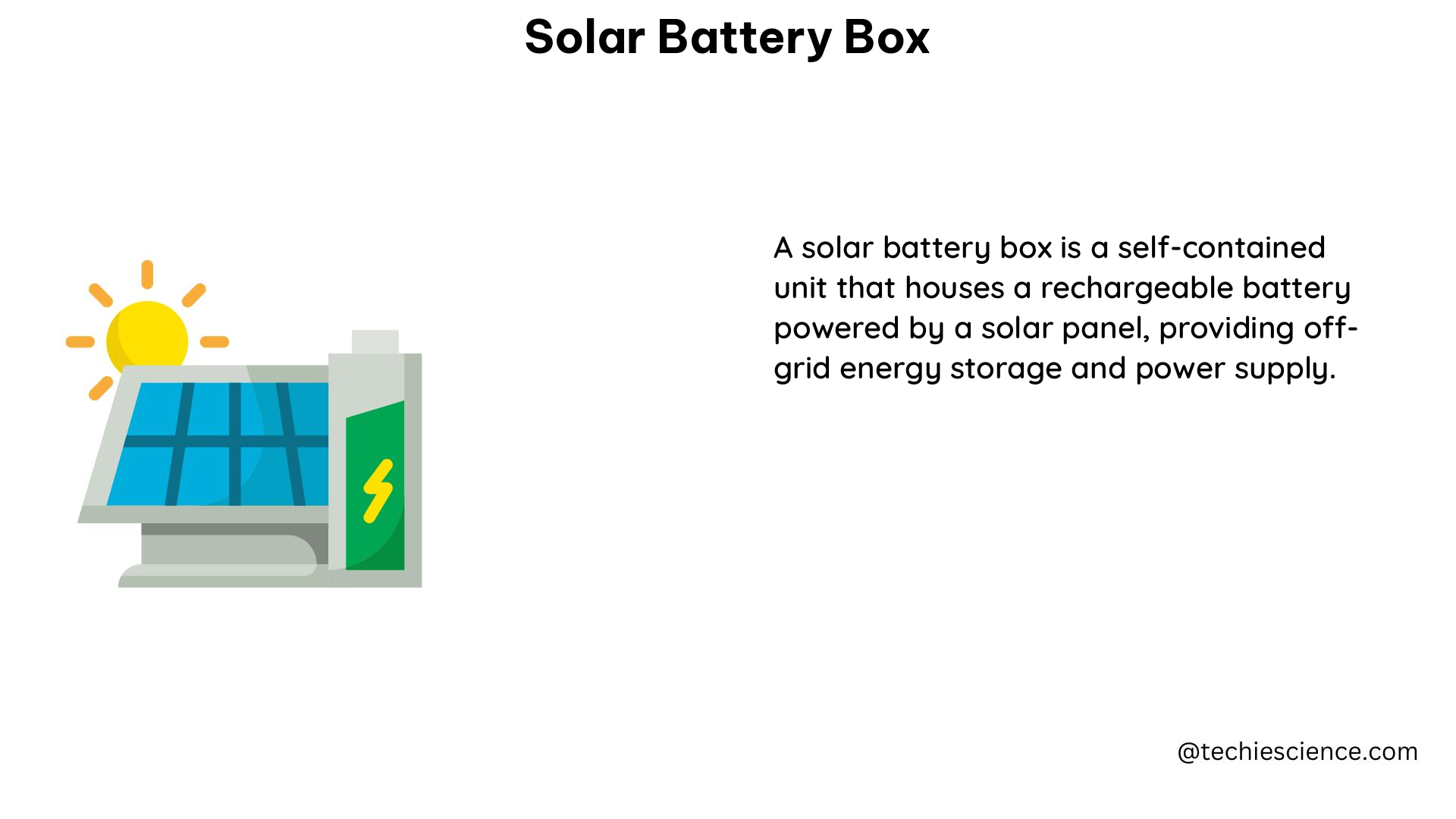A solar battery box is a specialized container designed to safely store and protect the deep-cycle batteries used in solar power systems. These boxes come in a wide range of sizes and capacities, catering to the diverse needs of solar power enthusiasts and professionals alike. In this comprehensive guide, we’ll delve into the intricate details of solar battery boxes, equipping you with the knowledge to make an informed decision for your renewable energy setup.
Dimensions and Capacity: Tailoring the Box to Your Needs
The dimensions of a solar battery box can vary significantly, ranging from compact, portable units to large, stationary enclosures. A common size for a portable solar battery box is 12 inches wide, 8 inches deep, and 12 inches high, which can accommodate one or two 12-volt deep-cycle batteries. However, the dimensions can scale up to accommodate multiple batteries and other system components, with some stationary boxes measuring 24 inches wide, 18 inches deep, and 36 inches high.
The battery capacity of a solar battery box is determined by the number and type of batteries it can hold. This capacity is typically measured in amp-hours (Ah) or kilowatt-hours (kWh). For example, a solar battery box designed for a 12-volt system might be able to hold one or two 12-volt batteries with a capacity of 100 Ah each, resulting in a total capacity of 200 Ah or 2.4 kWh.
Weight and Construction: Ensuring Durability and Portability

The weight of a solar battery box can vary significantly, depending on the size and number of batteries it contains. A small, portable solar battery box might weigh around 20-30 pounds, while a larger, stationary enclosure can weigh several hundred pounds.
Solar battery boxes are typically constructed from durable materials such as plastic, metal, or fiberglass. These materials are chosen for their strength, weather resistance, and ability to protect the batteries from physical damage. The choice of material can also impact the overall weight of the box, with plastic boxes generally being lighter than metal or fiberglass counterparts.
Ventilation: Keeping Your Batteries Cool and Safe
Proper ventilation is a critical consideration when selecting a solar battery box. The box should be designed to allow for adequate airflow around the batteries to prevent overheating and ensure efficient cooling. This is particularly important for lead-acid batteries, which can release hydrogen gas during charging and discharging, creating a potential explosion hazard if not properly ventilated.
Some solar battery boxes feature built-in fans or vents to facilitate air circulation, while others may rely on natural convection to promote airflow. The specific ventilation requirements will depend on the size and configuration of the box, as well as the type and number of batteries it houses.
Mounting Options: Portable or Stationary?
Solar battery boxes can be designed for either portable or stationary use, depending on the needs of the solar power system. Portable boxes are typically equipped with handles or mounting brackets, allowing them to be easily moved or mounted on a stand. These boxes are well-suited for off-grid applications, RVs, or other mobile setups where flexibility is a priority.
Stationary solar battery boxes, on the other hand, are typically mounted on a wall or floor, providing a more permanent and secure installation. These enclosures are often larger and heavier, accommodating multiple batteries and other system components. They are well-suited for grid-tied or larger off-grid solar power systems where a more robust and fixed installation is required.
Choosing the Right Solar Battery Box: Factors to Consider
When selecting a solar battery box, it’s essential to consider the specific needs of your solar power system. Key factors to consider include:
- Battery Type and Capacity: Ensure the box can accommodate the number and type of batteries required for your system, with sufficient capacity to meet your power needs.
- Available Space: Measure the available space in your installation location and choose a box that fits comfortably, allowing for proper ventilation and accessibility.
- Environmental Conditions: Consider the climate and weather conditions in your area, and select a box with the appropriate construction materials and ventilation to protect the batteries.
- Portability vs. Stationary: Determine whether you require a portable or stationary solar battery box based on the mobility and installation requirements of your solar power system.
- Budget: Solar battery boxes can vary significantly in price, so it’s important to balance your needs with your available budget.
By carefully considering these factors, you can select a solar battery box that not only meets the technical requirements of your solar power system but also provides the necessary protection, ventilation, and accessibility for safe and efficient operation.
Conclusion
Solar battery boxes are an essential component of any solar power system, providing a secure and protected environment for the deep-cycle batteries that store and deliver the energy generated by your solar panels. By understanding the key specifications and considerations surrounding solar battery boxes, you can make an informed decision that ensures the long-term reliability and performance of your renewable energy setup.
References:
- How to Calculate Solar Panel Amps
- Quantifying Self-Consumption Linked to Solar Home Battery Systems
- Tips for Solar Charging Your Data Collection
- Battery Voltage Chart: Batteries Charged By Solar Panels
- The Solar Panel Battery Is Your Sales Team’s Best Friend

The lambdageeks.com Core SME Team is a group of experienced subject matter experts from diverse scientific and technical fields including Physics, Chemistry, Technology,Electronics & Electrical Engineering, Automotive, Mechanical Engineering. Our team collaborates to create high-quality, well-researched articles on a wide range of science and technology topics for the lambdageeks.com website.
All Our Senior SME are having more than 7 Years of experience in the respective fields . They are either Working Industry Professionals or assocaited With different Universities. Refer Our Authors Page to get to know About our Core SMEs.